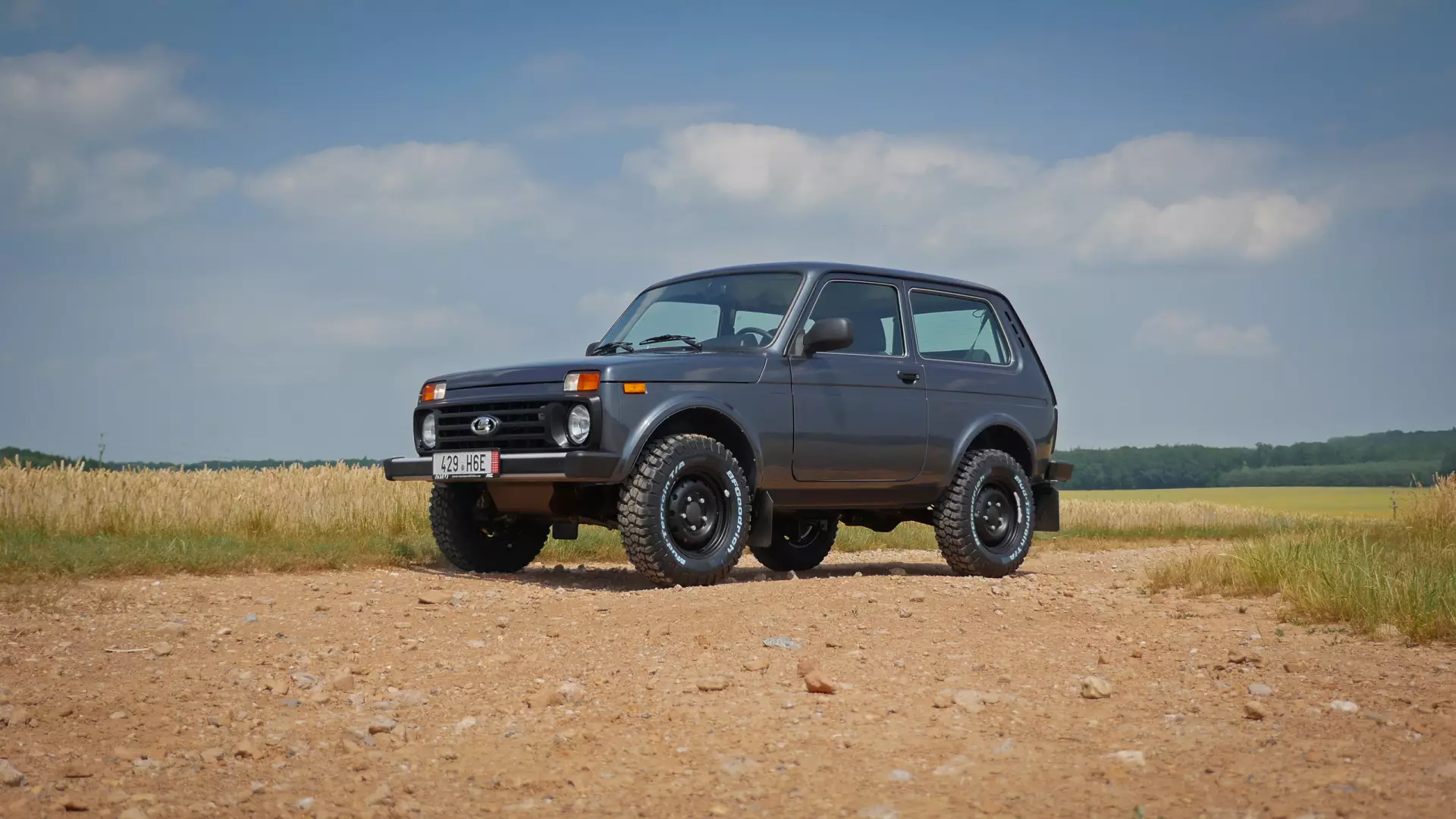When purchasing a new vehicle, one of the key factors that many buyers take into account is how easy it is to work on the car.
It’s also been noted that cars that are easier to repair tend to be among the most popular choices for buyers. Therefore, if you’re a beginner looking for a vehicle that’s simple to maintain and repair, we’ve put together a list of the best options.
1. Wrangler Jeep
The Wrangler Jeep is widely regarded as one of the easiest cars to repair. Its design allows for quick and accessible body modifications, making it a favorite among car enthusiasts.
The vehicle’s classic body design is paired with a modern engine, creating a seamless combination of timeless aesthetics and 21st-century engineering.
Unlike many large, powerful vehicles, the Wrangler is equipped with affordable parts and accessories, which are easy to find either at a Jeep parts store or a Jeep repair shop.
What if you’re not experienced in auto repair? On average, the cost to maintain a Wrangler Jeep is only around $200 per year.
Of course, no vehicle is without its flaws, and repairs can become costly over time. However, the durable nature of Jeep parts ensures that these expenses are infrequent. Overall, the Wrangler Jeep is a user-friendly car, offering an enjoyable repair experience for those who choose to work on it.
The 2025 Jeep Wrangler continues to deliver what it has always been known for: exceptional off-road performance and unmistakable style. Among its key strengths are its unrelenting off-road capability, extensive customization options, the availability of a plug-in hybrid engine, and its signature removable top and doors.

However, it’s not without its drawbacks. The steering, particularly in the Rubicon trim, is slow and can feel loose. Wind and tire noise become quite noticeable at highway speeds, and the cargo space falls short when compared to some more conventional SUVs.
For 2025, there are no major changes to the Wrangler. It remains part of the fourth generation that was introduced back in 2018. Despite its long tenure, the Wrangler has aged well thanks to modern updates that have made it more approachable for everyday use without compromising its rugged identity.
With two available body styles and multiple powertrain options, including a plug-in hybrid, there’s a Wrangler variant for almost every kind of adventure-seeker.
Cost to drive estimates for the 2025 Jeep Wrangler Sport 2dr SUV 4WD (3.6L 6cyl 6M) are based on 15,000 miles per year—split between 55% city and 45% highway driving—and assume a fuel cost of $3.13 per gallon for regular unleaded in North Dakota.
In that context, the Wrangler Sport comes out to about $199 per month in fuel costs, compared to an average of $161 per month for compact SUVs.
Jeep’s Wrangler has always had “dirt in its DNA,” and that legacy is alive and well in the newest iteration. Even the lower trim levels boast impressive off-road abilities. Optional upgrades like stronger axles, enhanced shocks, and locking differentials allow the Wrangler to tackle even tougher terrain.
Jeep has also refined the SUV’s physical layout to aid in off-roading; from its low and narrow hood to the placement of controls inside, the design serves both form and function, making off-road driving more intuitive and accessible.
While the Wrangler is in a league of its own, it does face serious competition. The Ford Bronco is perhaps its most direct rival, offering comparable ruggedness, a better on-road driving experience, and an array of trims and configurations.
For those who prefer a traditional roof, the Toyota 4Runner is a viable alternative. It matches the Wrangler’s off-road credentials in its more expensive, trail-focused trims, making it a worthy contender in this space.
Also Read: Top Engines That Can Survive Without a Working Cooling Fan
2. Subaru BRZ
The Subaru BRZ is the second most popular car among enthusiasts when it comes to ease of repair.
It stands out as one of the world’s safest and highest-performing two-door sports cars, delivering impressive performance. This vehicle was developed through a collaboration between Subaru and Toyota.
The initial version of the BRZ sports car was introduced in 2011, quickly gaining the attention of both the US and European markets due to its attractive design, reminiscent of German cars, and its budget-friendly price.
The Subaru BRZ has a substantial market for its parts, ensuring that owners will never face difficulty in locating the necessary components for their vehicle.
The car’s body is relatively straightforward to modify, and all the required parts are easily accessible and reasonably priced. Additionally, the motor of the car contributes significantly to the overall charm, enhancing the car’s smooth functionality.
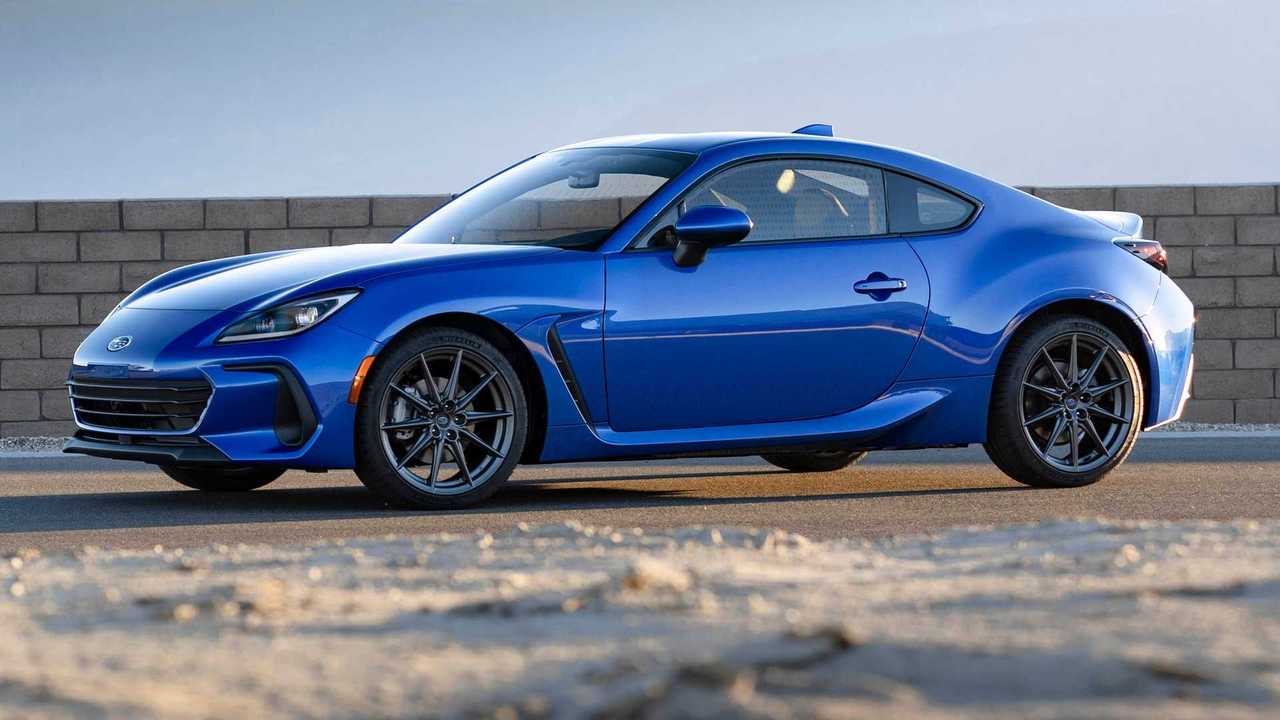
The 2025 Subaru BRZ is a purist’s sports car in an age where versatility often dominates the conversation. Like its mechanical twin, the Toyota GR86, the BRZ stays faithful to the tried-and-true sports car formula: rear-wheel drive, low weight, and an engaged driving experience.
Under the hood is a 228-horsepower flat-four engine. While that output may seem modest in today’s performance car landscape, the BRZ’s lightweight construction ensures it doesn’t need much to deliver a spirited drive.
The only notable changes for the 2025 model include the addition of a standard Sport mode to improve throttle response and updated interior materials for the Limited trim.
Cost to drive estimates for the 2025 Subaru BRZ Premium 2dr Coupe (2.4L 4cyl 6M) are based on 15,000 miles per year, with a driving mix of 55% city and 45% highway use, and a premium unleaded fuel price of $3.90 per gallon in North Dakota.
Based on these figures, the BRZ Premium would cost approximately $211 per month to fuel, compared to $161 per month for the average compact car.
The Subaru BRZ is a lightweight, agile coupe that delivers an engaging experience on winding roads. Its nimble handling makes it easy to enjoy without needing to push limits dangerously.
A manual transmission remains available—a rare and welcome feature even among performance vehicles. Subaru also keeps pricing competitive, positioning the BRZ as an ideal choice for drivers seeking their first sports car or a platform to modify and take to the track for high-performance events.
The BRZ’s primary rival is its close relative, the Toyota GR86. The most noticeable differences between the two lie in suspension tuning and exterior design—so choosing between them may come down to which one appeals more to your personal tastes.
Another strong alternative is the Mazda MX-5 Miata, widely regarded as the benchmark for delivering maximum driving enjoyment in a small, lightweight package.
3. Toyota Tacoma
The Toyota Tacoma stands out as the top choice when it comes to compact design and exceptional performance. This vehicle is easy to work on, as it has been specifically engineered with the ease of use in mind for its owners.
It would not be inaccurate to describe the Tacoma as one of the easiest SUVs to repair. The company produces a limited number of these cars, and each one delivers impressive functionality.
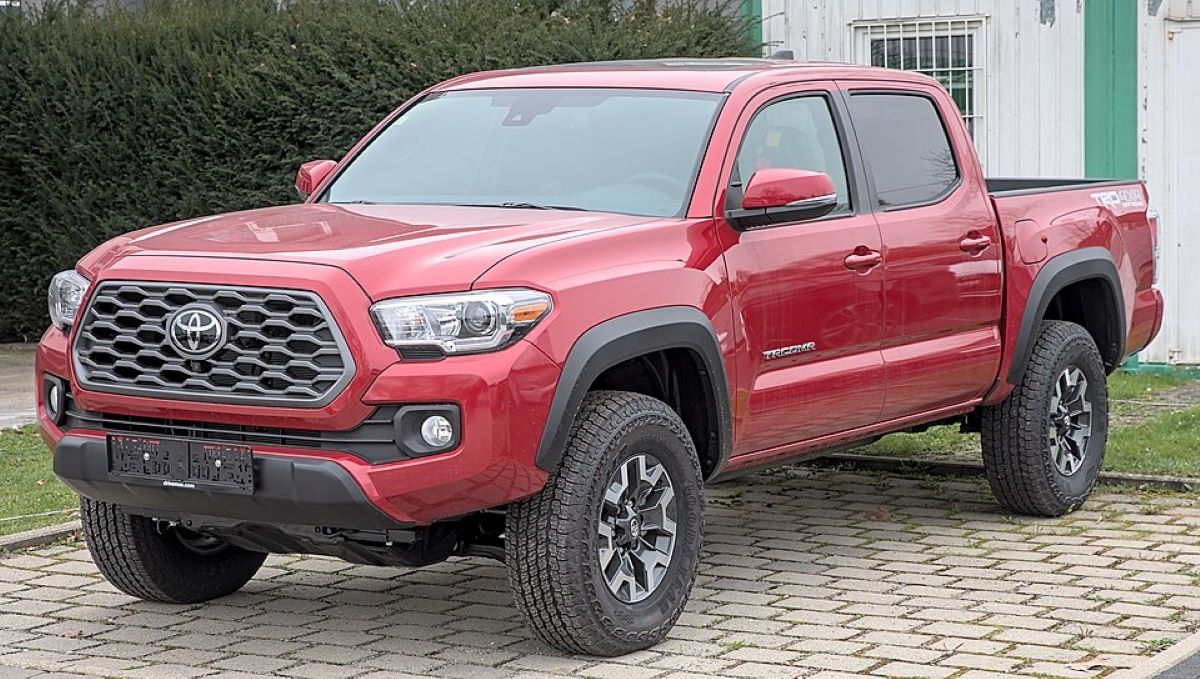
With its robust and appealing design, coupled with a powerful engine block, the Toyota Tacoma is equipped with premium features, including top-tier safety systems that provide drivers with a strong sense of security.
For those behind the wheel, the Toyota Tacoma offers an exciting driving experience, and it promises to be a name worth noting this year.
For the past two decades, the Toyota Tacoma has held its position as the best-selling small pickup truck in the United States, consistently outselling competitors like the Nissan Frontier and Ford Ranger. The latest, fourth-generation Tacoma made its debut in 2024, introducing more power and a nearly overwhelming suite of new technology features.
This new iteration of the Tacoma, built in Mexico, is also the first to replace the traditional V6 engine with a four-cylinder hybrid powertrain.
While this update is a welcome modernization, there’s a legitimate concern that the truck might stray from the core attributes that made it beloved in the first place—namely, its straightforward reliability and relatively affordable pricing.
I recently had the opportunity to spend a week driving the 2025 Toyota Tacoma TRD Pro Double Cab 4×4. The base model, a two-seat Tacoma SR XtraCab 4×2, starts at $31,590. In contrast, the TRD Pro Double Cab 4×4, which sits at the top of the range, carries a starting price of $63,900.
With destination charges and several optional features added in, the final tested price reached $68,093. The Tacoma lineup offers something for nearly every kind of buyer, ranging from no-frills work trucks to the upscale Limited trim.
One of the defining features of the Tacoma’s appeal is its customization. Toyota provides a broad array of grille and fascia designs, including my personal favorite on the TRD Pro tester—a heritage grille that pays tribute to the brand’s iconic trucks from the late 1980s and early 1990s.
The Tacoma is among the most versatile trucks in its class. It comes in two cab styles: the two-passenger XtraCab and the five-passenger Double Cab. Bed lengths include both 5-foot and 6-foot options.
This sets it apart from most rivals, like the Ford Ranger and Chevrolet Colorado, which are generally limited to a five-passenger crew cab and a 5-foot bed. The only other truck in the class with a similar range of configurations is the Nissan Frontier.
The TRD Pro trim is a nod to Toyota’s off-road racing heritage, specifically inspired by its high-speed desert runs in Baja California. As a result, the Tacoma TRD Pro comes loaded with serious off-road equipment.
This includes adjustable Fox shocks, a performance air intake system, and aggressive 33-inch Goodyear all-terrain tires mounted on 18-inch black alloy wheels. Reinforced aluminum skid plates provide underbody protection for critical components like the transfer case and fuel tank.
One standout feature exclusive to the TRD Pro is the IsoDynamic front seats. Upholstered in bold red SofTex synthetic leather, these seats were impressively comfortable during my time with the truck.
The IsoDynamic seats use a system of air-over-oil shock absorbers to help cushion occupants from jarring off-road impacts. Additionally, a dedicated air pump lets drivers adjust the firmness of the seat’s damping to their preference.
Powering all Tacoma models is a version of Toyota’s T24A-FTS turbocharged four-cylinder engine. In the case of my TRD Pro test truck, that engine was paired with a hybrid system composed of a 48-horsepower electric motor and a compact 1.87-kilowatt-hour nickel-metal hydride battery.
This setup delivers a substantial combined output of 326 horsepower and a formidable 465 pound-feet of torque.
For buyers who prefer a non-hybrid powertrain, Toyota also offers the same 2.4-liter engine in different states of tune: 228 horsepower in the base trim, 270 horsepower with a manual transmission, and 278 horsepower for automatic variants.
Fuel economy for my TRD Pro hybrid came in at 22 mpg in the city, 24 mpg on the highway, and 23 mpg combined. While these figures may not be groundbreaking for a hybrid vehicle, they are quite respectable considering the truck’s size and high-performance capabilities.
4. Lada Niva
The timeless design of the Lada series has remained unchanged since 1977, and this consistency continues to impress its users. The classic design allows car owners to easily work on the vehicle, with all the necessary information readily accessible.
Spare parts for the Lada Niva are easy to find, available in virtually any parts store. Drivers don’t have to wait long for parts, as most are affordable and easy to acquire.
What’s more, Lada cars don’t require expert mechanics for repairs, as most owners are able to learn how to fix them on their own. This makes the Lada Niva a convenient and user-friendly vehicle for those who prefer to handle repairs themselves.
With winter in full swing and snow blanketing most mountain routes, many drivers are looking to move beyond traditional four-wheel-drive SUVs and into true off-road vehicles that can confidently tackle rough terrain and slippery conditions.
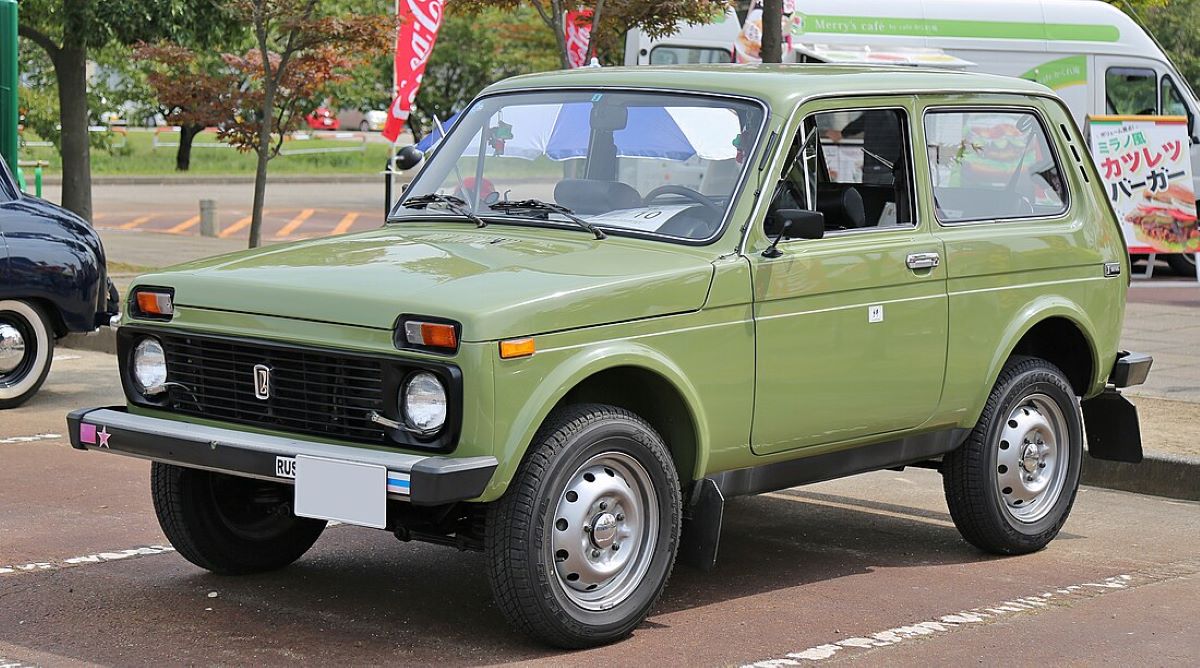
The downside? Since the discontinuation of the Suzuki Jimny—the most affordable off-roader—the remaining off-road-capable SUVs have become significantly more expensive.
Options now start at €84,000 in Spain for the Toyota Land Cruiser and £61,125 for the Jeep Wrangler, with even higher price tags attached to luxury models like the Land Rover Defender and the Mercedes-Benz G-Class.
However, the landscape looks quite different beyond the European Union, where more reasonably priced off-roaders are still available. These include the Chinese electric iCar V23, the Nissan Armada as a counterpart to the Land Cruiser, the Toyota 4Runner, the Mitsubishi Montero Sport, and even the Lada Niva Legend.
Today, the spotlight is on the most up-to-date version of the Niva, which adds some SUV features to the rugged platform—the Lada Niva Travel. Notably affordable in its home market, the Niva Travel represents a practical option for budget-conscious buyers seeking off-road capability.
After reviewing Lada’s online configurator in Russia, it’s clear that the Lada Niva Travel starts at a remarkably low price of 1,314,000 roubles, which, at the current exchange rate, works out to approximately £9,700.
Despite its low cost, the Niva Travel is offered in a choice of four exterior colours and five trim levels: Classic’24, Comfort’24, Luxe’24, Black’24, and KHL’24, giving buyers a fair amount of customization.
In terms of size and agility, the Lada Niva Travel measures just 4.09 metres in length with a wheelbase of only 2.45 metres. This compact form factor makes it very capable in off-road situations, including tackling uneven ground and navigating shallow water crossings.
Naturally, it comes equipped with all-wheel drive and a manual gearbox to support its off-road credentials. Where the Niva Travel might disappoint is under the hood. It is powered by a 1.7-litre naturally aspirated petrol engine that produces 80 PS. While dependable, this engine isn’t known for strong performance, making power its weakest link.
Also Read: 5 Cars With the Best Rear Camera Clarity at Night
5. Chevrolet Silverado
While it can sometimes be challenging for users to repair trucks due to their daily functioning, the Chevrolet Silverado by Toyota stands as an exception.
With its straightforward design and effective performance, this truck is one of the easiest to work on. When issues arise with the Silverado, there are minimal hassles involved in fixing the problem, making it a convenient choice for those who prefer to handle repairs with ease.
The Chevrolet Silverado 1500 is a large truck, but its driving dynamics make it feel more manageable than its size suggests.
Thanks to a lightweight steering feel and minimal body roll when cornering, the Silverado handles with surprising agility. This light steering lends the truck a nimble character, although it comes at the expense of steering feedback.
The braking system is strong and easy to control, while the overall ride quality is smooth and composed. Chevrolet offers the Silverado with four distinct engine choices: a turbocharged 2.7-liter four-cylinder producing 310 horsepower, a 305-horsepower turbodiesel, and two V8s delivering either 355 or 420 horsepower.

The base turbo-four provides ample power for most driving needs, and the accompanying eight-speed automatic transmission shifts smoothly and unobtrusively. The diesel engine stands out for its quiet, refined operation, and both V8 options supply strong, confident acceleration.
When it comes to towing, the Silverado impresses with a maximum towing capacity of 13,300 pounds, a solid figure for a half-ton truck.
Achieving this top capacity requires either a Crew Cab with the short box and the diesel engine or a diesel-powered Double Cab paired with the medium box. Generally, rear-wheel-drive variants can tow slightly more than their four-wheel-drive counterparts.
However, to unlock the maximum towing potential of any Silverado configuration, the Max Trailering package is a must-have. Without it, towing capacity tops out at under 10,000 pounds, no matter which powertrain or body style you choose.
Silverado models equipped with the 2.7-liter turbo-four are capable of towing between 8,900 and 9,500 pounds. Opting for the 5.3-liter V8 raises that range to between 9,200 and, when properly configured, 11,300 pounds.
The 6.2-liter V8, available only with four-wheel drive, allows for towing between 8,800 and 9,200 pounds, and it can reach up to 13,200 pounds when the Max Trailering package is added. Rear-wheel drive is not available with the 6.2-liter engine.
6. Toyota Corolla
The Toyota Corolla is another remarkable vehicle on the list of the easiest cars to work on. Even today, its design has largely remained unchanged, staying true to its classic form over the years.
While the modern technologies in the car may occasionally present challenges when working on it, the vehicle remains quite user-friendly in terms of its design and overall functionality.
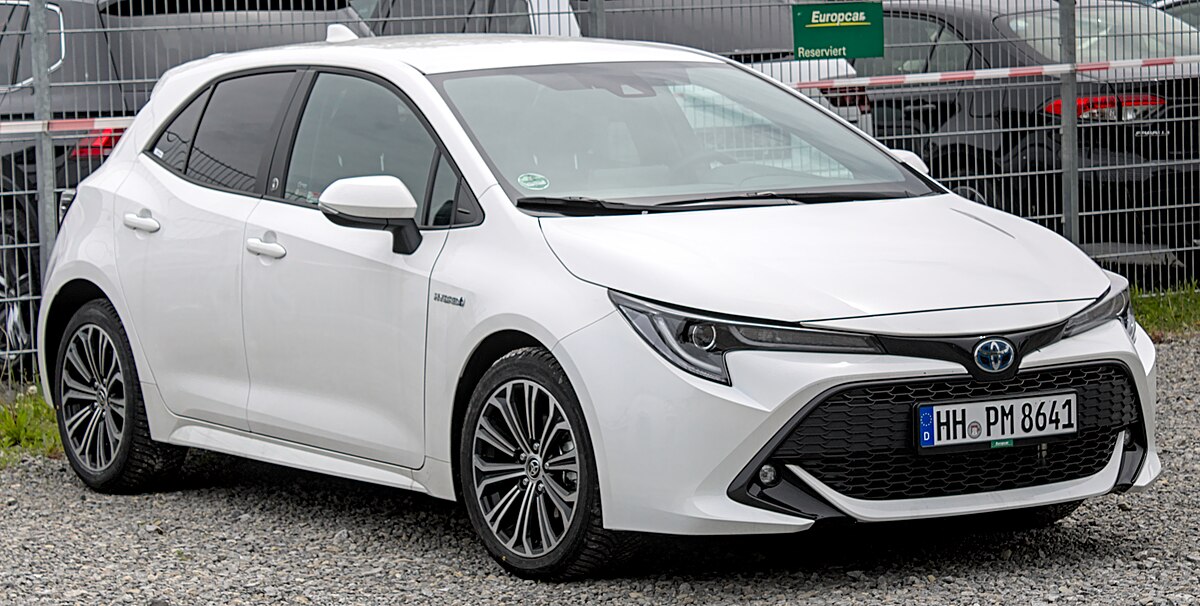
Created by the Japanese automaker, the Toyota Corolla is a reliable vehicle, contributing to its status as one of the best-selling cars globally. Known for its reliability and minimal issues, the Corolla has an estimated annual maintenance cost of $677.
Common problems with the Corolla include wheel bearing replacement, starter repairs, and issues with the brake system exhaust, among others. Fortunately, repairs are made easier by the wide availability of spare parts.
7. Honda Accord
Next on the list is the Honda Accord, which stands out as a leader in terms of maintenance cost savings within the mid-range sedan category. The network of Honda car maintenance and repair centers is also widely recognized for its popularity.

This extensive network ensures that drivers can easily find the correct replacement parts without having to deal with exorbitant repair costs. The car’s design has been crafted in such a way that almost every component is easily accessible to users.
The combination of straightforward design, easy access, and the car’s efficient performance makes the Honda Accord one of the top choices in the list of easiest cars to work on.
The Accord underwent a redesign in 2023, introducing a more advanced architecture, an upgraded hybrid powertrain, a cleaner and more refined gas-powered model, and improved technology. It carried over into 2024 without major changes, and for 2025, it receives a few key updates.
The SE trim now replaces the previous EX trim and features black exterior design accents. Rear-seat air conditioning vents and USB-C ports are now standard across the lineup. Additionally, all hybrid models now come standard with heated front seats and a Qi-compatible 15W wireless phone charger.
Although the midsize sedan segment isn’t as crowded as it once was, the Accord continues to lead the class, though it feels slightly less compelling than its predecessor. Both of its available powertrains provide smooth acceleration, but during testing, the turbo-four’s CVT felt a bit sluggish.
Steering feel was underwhelming, but braking performance was strong and reassuring, while handling remained neutral and composed. The ride quality was particularly good with smaller wheels, though wind and road noise seemed more noticeable compared to some rivals.
Inside, the Accord features an attractive and modern design that echoes the Civic without directly copying it. The base infotainment touchscreen feels small by current standards, and the materials used in lower trims—particularly seat fabrics and door panels—can feel rough.
If you want a more premium cabin, you’ll need to opt for a hybrid trim. On the plus side, all models include a robust suite of standard safety technologies. Overall, the Accord remains a smart, capable, and comfortable choice, but the previous generation tested better and returned slightly superior fuel economy.
The 2025 Accord retains its existing powertrains. The LX and SE trims are powered by a 1.5-liter turbocharged inline-four that produces 192 horsepower and 192 lb-ft of torque, paired with a continuously variable transmission. This setup is rated at 29 mpg in the city and 37 mpg on the highway. All Accord models remain front-wheel-drive.
The hybrid powertrain, available on higher trims, pairs a 2.0-liter naturally aspirated four-cylinder engine with dual electric motors and a lockup-clutch automatic transmission, delivering a combined 204 horsepower and 247 lb-ft of torque.
The most fuel-efficient hybrid variant, the EX-L on 17-inch wheels, is rated at 51 mpg city and 44 mpg highway, while the Sport, Sport-L, and Touring hybrids return 46 mpg city and 41 mpg highway.
In terms of performance, the hybrid Accord is surprisingly quick. Despite the added weight of its battery and electric components, the 2023 Touring Hybrid (mechanically identical to the 2025 model) accelerated from 0 to 60 mph in just 6.6 seconds—1.3 seconds faster than the gas-only EX.
This makes it quicker than many rivals in the class, though the Toyota Camry TRD, with its V6 engine generating nearly 100 more horsepower, completes the sprint in just 5.8 seconds.
8. Chevrolet Cruze
The latest design of the Chevrolet Cruze has been carefully crafted to ensure that all commonly needed components are placed within easy reach of the user, providing a smooth and efficient experience when accessing the vehicle.
The well-organized layout and easily visible components in the car enhance its accessibility, making the Chevrolet Cruze one of the easiest modern cars to work on.
The Chevrolet Cruze exemplifies the perfect balance between great design and effective functionality. Isn’t that a rare combination to find in a car?
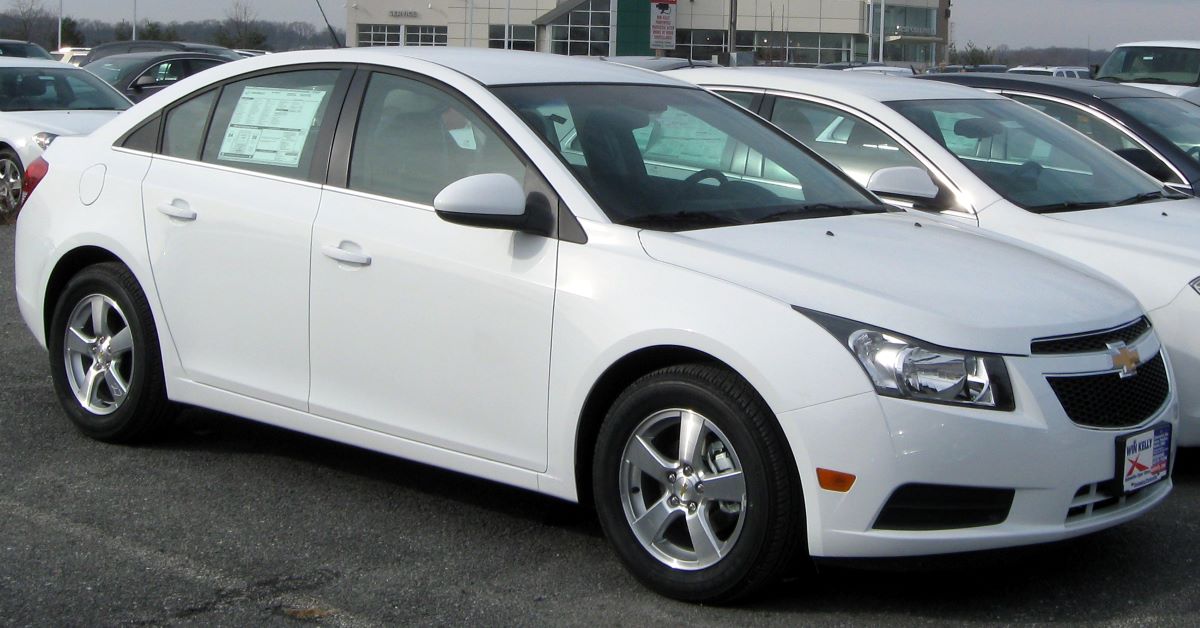
The vehicle carries an MSRP of $17,995 and features a front-wheel-drive layout. Under the hood, it’s powered by a 1.4-liter turbocharged inline-four gasoline engine paired with a 6-speed automatic transmission. This powertrain delivers 153 horsepower and 177 lb-ft of torque, available between 2,000 and 4,000 rpm.
In terms of fuel efficiency, it achieves 28 miles per gallon in the city, 38 mpg on the highway, and 32 mpg combined. With a 13.7-gallon fuel tank, the estimated driving range is approximately 383.6 miles in city conditions and up to 520.6 miles on the highway.
The steering system is power-assisted, offering a turning diameter of 38.7 feet. Suspension-wise, the vehicle is equipped with a MacPherson strut setup in the front and a compound crank design at the rear.
9. Hyundai Genesis Coupe
Working on a car becomes much easier when it provides ample space and is equipped with well-designed features, and the Hyundai Genesis Coupe is one such vehicle that offers both.
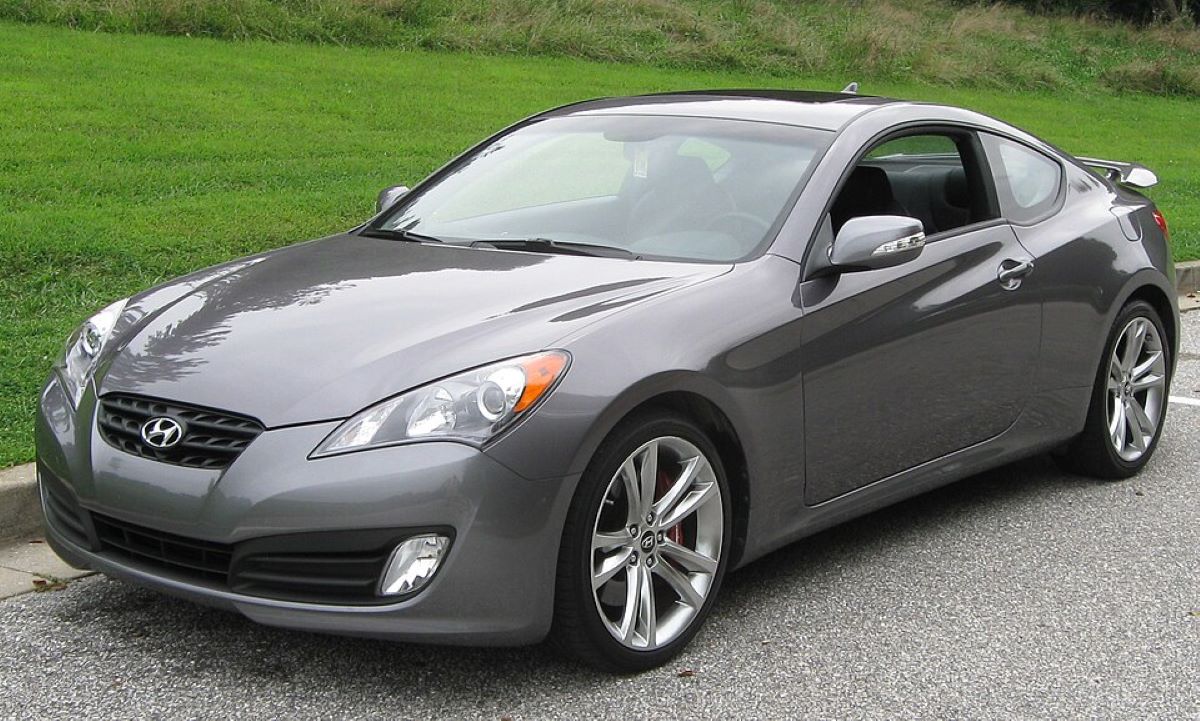
To be considered one of the easiest cars to work on, the design of the Hyundai Genesis Coupe ensures that every component is easily visible and accessible to the user.
The car seamlessly integrates modern technologies with its design, making it a standout in terms of both functionality and ease of repair.
One of the standout features of the 2013 Hyundai Genesis Coupe 2.0T is its significantly upgraded engine. The 2.0-liter unit received a new twin-scroll turbocharger and a larger, more efficient intercooler, which helped improve both power output and fuel efficiency.
When the Genesis Coupe 2.0T was first introduced in 2010, it delivered a modest 210 horsepower and 223 lb-ft of torque.
Hyundai has since turned up the performance considerably, with the 2013 version now producing 274 horsepower and 275 lb-ft of torque. That’s an increase of 64 horsepower and 52 lb-ft, a much-needed and highly appreciated boost.
As expected, the additional power results in better performance figures, and the Genesis Coupe 2.0T delivers impressively in this area. In a straight line, the 2013 model would leave its predecessor in the dust, achieving 0 to 60 mph in just 5.7 seconds and completing the quarter mile in 14.2 seconds at 98.4 mph.
For comparison, the 2010 model managed 0 to 60 in 6.8 seconds and ran the quarter mile in 15.3 seconds at 90.9 mph. On the figure-eight course, the improvements continue to show.
The 2013 version completed it in 25.5 seconds at 0.69 g, with a lateral grip of 0.97 g. In contrast, the 2010 model did it in 26.8 seconds at 0.65 g and 0.91 g of lateral grip, highlighting Hyundai’s effort to ensure the new model could effectively manage its increased power.
However, the gains in performance aren’t without their drawbacks. Although more power is always welcome, the way it’s delivered raises some concerns.
The added torque means freeway passing can be done without downshifting, but the delivery is inconsistent and marked by noticeable turbo lag. When the car is out of boost, it struggles, and then the turbo kicks in suddenly and aggressively, which makes smooth driving—especially through corners—more difficult.
The engine and driveline safety management system has improved compared to previous iterations, but it’s still noticeable. Fortunately, Hyundai allows drivers to fully disable both stability and traction control, so if you want to get sideways, you can. However, when these systems are active, they tend to be overly intrusive.
10. Ford Crown Victoria
In the past, Ford vehicles, especially those used by taxis and police, were known to be quite challenging to work on.
However, Ford took on the challenge of making repairs easier for users, and the result of this effort is the Crown Victoria model.
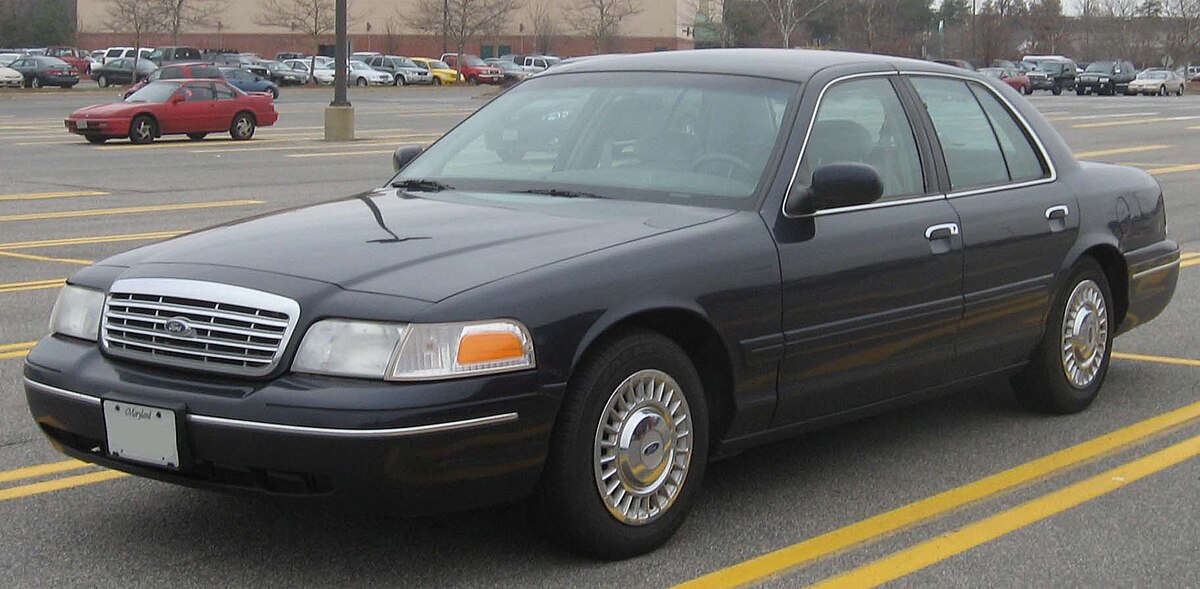
With the Ford Crown Victoria, replacing parts is a straightforward process, making it one of the easiest vehicles to work on. The car is simply outstanding in its ability to efficiently handle all of its repair needs.
Ford built vehicles on the Panther platform for 33 years, serving the North American market. A significant portion of those were Crown Victorias, which adopted their name from a briefly available Fairlane trim level offered in the mid-1950s. A large number of these Panther-based Crown Victorias found their calling as police cruisers.
For many people of a certain generation, the image of a Crown Vic decked out with a light bar and police livery remains the quintessential cop car—even seven years after the final one rolled off Ford’s production line. In tribute to this enduring workhorse, we take a look back at the history of the Panther platform in law enforcement service.

